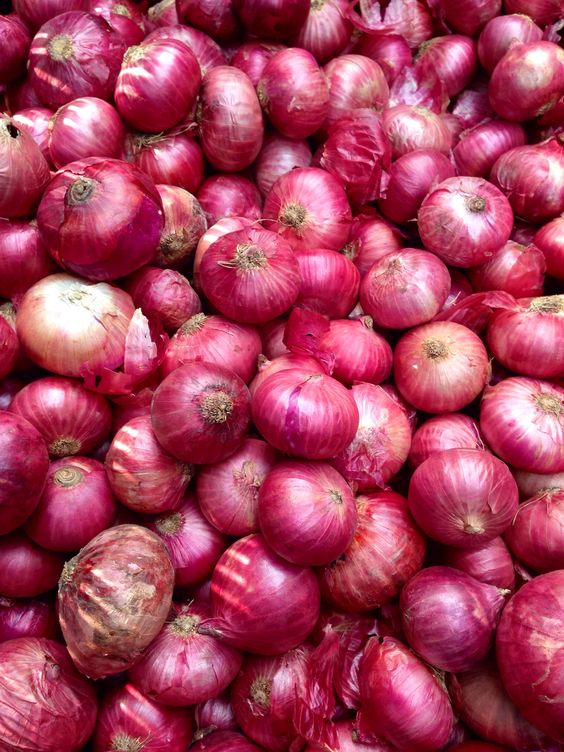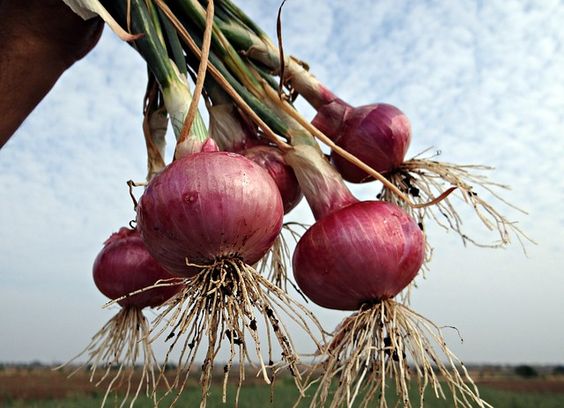Onion Storage: Optimize with Smart Agriculture for Maximum Yield
Onion Storage, a staple in global cuisine, is a perishable commodity with a significant post-harvest loss. Traditional storage methods often fall short in preserving onion quality and quantity, leading to substantial economic losses for farmers. The integration of smart agriculture technologies presents a promising avenue to optimize onion storage and reduce wastage. This article delves into the challenges of onion storage, explores the potential of smart agriculture solutions, and outlines strategies for implementing efficient and sustainable onion storage systems.
Contents
- 1 Challenges in Onion Storage
- 2 Smart Agriculture Solutions for Onion Storage
- 3 Benefits of Smart Onion Storage
- 4 Explanation of Smart Onion Storage System
- 5 Usefulness of Smart Onion Storage
- 6 Advantages of Smart Onion Storage
- 7 Implementation Strategies
- 8 Challenges and Opportunities
- 9 Objectives of Smart Onion Storage
Challenges in Onion Storage
Onion storage is fraught with several challenges that impact both quality and quantity. These include:
- Physiological Deterioration: Onions undergo physiological changes during storage, such as sprouting, decay, and weight loss, affecting their market value.
- Pest and Disease Infestation: Insects, rodents, and diseases pose a significant threat to stored onions, leading to quality degradation and quantity loss.
- Suboptimal Storage Conditions: Improper temperature, humidity, and ventilation can accelerate onion deterioration and create favorable conditions for pests and diseases.
- Lack of Monitoring and Control: Traditional storage methods often lack real-time monitoring and control systems, making it difficult to detect and address storage issues promptly.
Smart Agriculture Solutions for Onion Storage
Smart agriculture, with its emphasis on data-driven decision-making and automation, offers innovative solutions to address the challenges of onion storage. Key technologies include:
- Sensor Networks: Deploying sensors to monitor temperature, humidity, CO2 levels, and other critical parameters within the storage facility provides real-time data for informed decision-making.
- Internet of Things (IoT): Connecting sensors, actuators, and other devices through IoT enables remote monitoring and control of storage conditions, facilitating proactive management.
- Artificial Intelligence (AI): AI algorithms can analyze sensor data to predict onion quality, detect anomalies, and optimize storage conditions for optimal preservation.
- Machine Learning: Machine learning models can be trained to recognize patterns in storage data, enabling predictive maintenance and early detection of issues.
- Automated Systems: Implementing automated systems for ventilation, humidity control, and pest management can enhance storage efficiency and reduce labor costs.
- Data Analytics: Analyzing storage data can provide valuable insights into onion behavior, enabling the development of optimized storage protocols.
Benefits of Smart Onion Storage
Adopting smart agriculture practices for onion storage offers numerous benefits:
- Improved Onion Quality: Precise control of storage conditions helps maintain onion quality, reducing spoilage and increasing market value.
- Reduced Post-Harvest Losses: By minimizing physiological deterioration, pest infestations, and other storage-related issues, smart storage significantly reduces onion losses.
- Increased Profitability: Higher-quality onions and reduced losses translate into increased revenue for farmers.
- Sustainable Practices: Smart storage systems often incorporate energy-efficient technologies, reducing the environmental impact of onion production.
- Data-Driven Decision Making: Real-time data and analytics enable farmers to make informed decisions regarding storage management and marketing.
Explanation of Smart Onion Storage System
A smart onion storage system typically consists of the following components:
- Sensors: Temperature, humidity, CO2, and other relevant sensors are installed within the storage facility to collect data.
- IoT Gateway: Data from sensors is transmitted to an IoT gateway for processing and communication.
- Cloud Platform: Data is stored and analyzed on a cloud platform, providing access to information from anywhere.
- Analytics Software: AI and machine learning algorithms are used to analyze data and generate insights.
- Automated Systems: Actuators and control systems are integrated to adjust storage conditions based on data analysis.
- User Interface: A user-friendly interface allows farmers to monitor storage conditions, receive alerts, and make adjustments.
Usefulness of Smart Onion Storage
Smart onion storage offers several practical applications:
- Predictive Maintenance: By analyzing sensor data, potential equipment failures can be predicted, allowing for preventive maintenance.
- Early Warning Systems: Anomalies in storage conditions can be detected early, enabling timely interventions to prevent onion damage.
- Optimized Storage Conditions: Precise control of temperature, humidity, and ventilation helps create the ideal environment for onion storage.
- Pest Management: Smart systems can detect pest infestations early and trigger automated pest control measures.
- Supply Chain Optimization: Data on onion quality and quantity can be used to optimize supply chain management and marketing strategies.
Advantages of Smart Onion Storage
Compared to traditional storage methods, smart onion storage offers several advantages:
- Improved Efficiency: Automation and data-driven decision-making enhance storage efficiency and reduce labor requirements.
- Reduced Costs: Lower post-harvest losses and optimized resource utilization contribute to cost savings.
- Reduced Environmental Impact: Energy-efficient systems and reduced waste contribute to a smaller environmental footprint.
- Improved Traceability: Detailed data on onion storage can enhance traceability, meeting consumer demands for transparency.
- Risk Management: By identifying potential issues early, farmers can mitigate risks and protect their investment.
Implementation Strategies
Successful implementation of smart onion requires careful planning and execution. Here are some key considerations:
- Needs Assessment: Identify specific storage challenges and define clear objectives for the smart storage system.
- Technology Selection: Choose appropriate sensors, IoT devices, software, and automation equipment based on storage facility size and requirements.
- Data Management: Establish robust data management practices, including data collection, storage, analysis, and security.
- Integration: Integrate smart storage technology with existing farm management systems for seamless operation.
- Training and Support: Provide adequate training to farmers and staff on system operation and data interpretation.
- Pilot Testing: Conduct pilot projects to evaluate the effectiveness of the smart storage system before full-scale implementation.
Challenges and Opportunities
While smart onion storage offers significant benefits, it also presents challenges:
- Initial Investment: Implementing smart storage systems requires a substantial upfront investment.
- Technological Complexity: Integrating various technologies and managing data can be complex.
- Internet Connectivity: Reliable internet connectivity is essential for data transmission and remote monitoring.
- Data Security: Protecting sensitive data from unauthorized access is crucial.
Despite these challenges, the potential benefits of smart onion storage outweigh the drawbacks. As technology continues to advance and become more affordable, the adoption of smart agriculture practices in onion storage is expected to grow.
Objectives of Smart Onion Storage
The primary objectives of implementing smart onion storage systems are:
- To maintain optimal storage conditions for onion preservation.
- To minimize post-harvest losses due to physiological deterioration, pests, and diseases.
- To enhance onion quality and marketability.
- To improve the profitability of onion production.
- To adopt sustainable storage practices.
Onion Storage Smart agriculture technologies offer a transformative approach to onion storage, addressing the challenges of traditional methods and unlocking new opportunities for farmers. By integrating sensors, IoT, AI, and automation, it is possible to create efficient, sustainable, and profitable onion storage systems. Embracing smart agriculture is essential for maximizing the value of onion production and ensuring food security.




